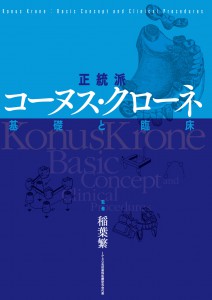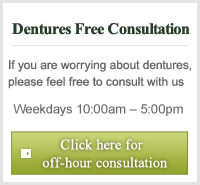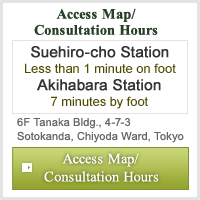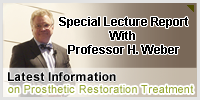2015年2月23日
What is the biggest difference between the Riegel telescope treatment method and a bridge? (50 year old living in Hawaii)
Q. I am 50 years old and live in Hawaii.
I had a problem with my middle molar in the bottom left of my mouth and went to an American dentist. He took it out right away and suggested that I get an implant.
+ The furthest molar back in the same area received nerve treatment and has a crown. The molar next to that currently has a crown. My situation is that my front molar doesn't have a root and is only supported by the root of the molar behind it. On top of that I have a cavity there.
+ The 3rd and 4th teeth after those are healthy.
Under the circumstances described above, if I don't hurry up and have my middle molar taken out, the cavity will get worse. I was told that I should get an implant as soon as possible. I was also told by another dentist that my lower jaw was small and that my bone was thin. I don't want to get implants. No matter what I hear, I just can't reconcile having implants put in. So I have a question.
*If I request the treatment you call Riegel telescope, how long would I have to stay in Japan? And what can I expect the cost to come to?
*What is the major difference between the Riegel telescope treatment method and just having a bridge made? How much filing will my teeth need?
*I am 50 years old. Considering the future should I go with Riegel telescope or a bridge?
*What about the tooth extraction period? Considering that I will not have a false tooth made after extraction, how many days or months before I travel to Japan for treatment should I schedule the extraction for?
I am limited to how long I can stay in Japan so I would really like to make all the preparations in advance. Sorry for my confusing questions as I am new to these things, but I could really use your advice. I have been worrying over this so much recently that I haven't been able to sleep. I look forward to your response.
A. Thank you for your questions. I would like to answer them one by one.
* If I request the treatment you call Riegel telescope, how long would I have to stay in Japan? And what can I expect the cost to come to?
If you decide to go with Riegel telescope treatment, we would need to ask you for 3 months of your time (This actually varies per patient). Each step of the way, the confirmation process and the manufacturing process, etc., takes time, so it is not a procedure that can be done quickly. As far as costs go, I haven't yet seen the actual condition of your teeth, but Riegel telescope typical costs around the same price as implants and sometimes it can be more expensive.
*What is the major difference between the Riegel telescope treatment method and a bridge? How much filing will my teeth need?
The difference lies in removability. Riegel telescope dentures can be removed, which makes them cleaner and more hygienic. When you use them they feel similar to a bridge that is set in place with a locking mechanism. The amount of filing necessary for Riegel telescope and a bridge is virtually the same. It typically comes out to be 1.5 millimeters and of course it is done under the premise that the nerves are to be left intact.
*Can you make dentures for just one tooth?
Treating one missing tooth with dentures will actually end up hurting your teeth. An adhesive bridge is held in place only with adhesive so it is bound to come off at some point. And false teeth held in with clasps (a wire support method) may actually cause more damage to your teeth than a bridge does. This is because every time the dentures move they wiggle the supporting teeth.
*I am 50 years old. Considering the future should I go with Riegel telescope or a bridge?
If you are thinking about the future then consider that with Riegel telescope you can easily have your dentures adjusted even if you lose your furthest back tooth. However in your case I think that a bridge is also a good treatment method. It may also be a good idea to go with a bridge for now and when you lose your back molar come in for Riegel telescope dentures.
* What about the tooth extraction period? Considering that I will not have a false tooth made after extraction, how many days or months before I travel to Japan for treatment should I schedule the extraction for?" So said that your doctor in America told you that before you get implants you must leave the tooth be for around 6 months after extraction without using a false tooth in order to let your bone heal.
When getting implants it is true in this case that you cannot use a false tooth. But if you choose Riegel telescope or a bridge, we will need to make use of teeth on both sides of your jaw, and we can make you false teeth. If extraction seems necessary we can make the necessary preparations beforehand.
First you must decide whether you will choose a bridge, Riegel telescope, or implants. After you have decided which method to use each treatment method proceeds in a different way and the order in which we put in false teeth differs case by case.
As for extraction, it is best to get it done as early as you can. Bone absorption will stabilize so it really is just a matter of what method you choose to go with. I know it can be an uneasy experience. You may not be able to make this decision yourself and if that is the case please contact us with your questions.
2015年2月16日
What is "Inaba-style Konus Krone"?
In recent years the telescope system, dentures developed in Germany, has frequently been picked up in dental magazines. This can only be a consequence of the IPSG 20th Anniversary Special Lecture Meeting, in which Dr. Shigeru Inaba worked as a representative.
Konus Krone gained wild popularity in the 1980s. But after only 10 years its popularity waned. The technology experienced a lot of troubles and its reputation diminished.
It is thought that the cause of these troubles was that the design, manufacturing method, metals used, applicable cases, and other such factors were not uniform in the Konus Krone method.
As a result the technique fell out of mainstream use.
It seems that in recent years dentists are taking another look at Konus Krone. But even still, I get the sense when reading that there is a lot of misinformation going around about this technique.
Dr. Inaba studied Konus Krone directly at its source in Germany.
Professor Karlheinz Koerber wrote Konuskronen, the original textbook on the Konus Krone technique.
Of course he wrote this book in German, but Dr. Inaba has read this Konus Krone text book from cover to cover so many times that his copy is now worn and tattered.
This book is filled with designs, manufacturing methods, applicable cases, contraindications, resolutions, and many other topics related to Konus Krone.
There are a few inconsistencies between the contents of this book and the contents of information that has been spreading throughout Japan.
Konus Krone dentures are successful because of the many rules and manufacturing methods used in making them. They are not dentures that can be made using individual styles.
But even so, there is little anyone can do to stop these new methods from proliferating.
Dr. Inaba learned Konus Krone in Germany from first-hand information and follows the procedures laid out in the textbook precisely. This has led to wonderful treatment results.
I wish to preserve an orthodox version of Konus Krone that follows the original textbook. This is what I refer to as "Inaba-style Konus Krone" when comparing Dr. Inaba's technique with other Konus Krone techniques that are spreading throughout Japan.
First, the reputation of Konus Krone that spread among clinicians during the 1980s suffered. Also, here we will have Dr. Shigeru Inaba explain exactly what the correct Konus Krone treatment method is.
[Contents]
1. The history of the telescope system and misconceptions about Konus Krone
2. How Konus Krone is handled in Germany
3. How Konus Krone is handled in Japan
4. How Konus Krone should be used from now on
1.The history of the telescope system and misconceptions about Konus Krone
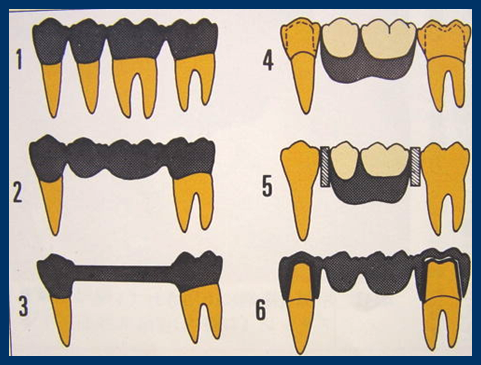
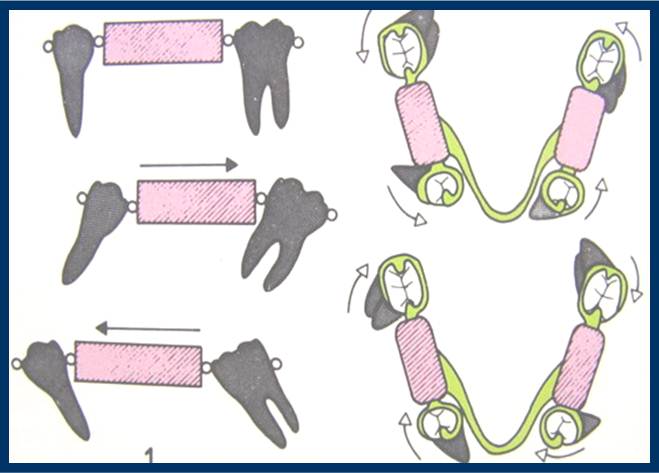
In Japan this technique is only known as Konus Krone, but in Germany there are many different kinds of telescope systems. It is extremely regrettable that incorrect Konus Krone treatment methods have spread across Japan and have caused the reputation of telescope dentures as a whole to suffer.
The Konus Krone textbook was translated into Japanese in the 1980s and for a while it was very popular among a portion of dentists here. But after only about 10 years its popularity waned. There were many problems with the treatment method and its reputation suffered. It is thought that the cause of these troubles was that the design, manufacturing method, metals used, applicable cases, and other such factors were not uniform in the Konus Krone method. As a result the technique gradually fell out of use.
2. How Konus Krone is handled in Germany
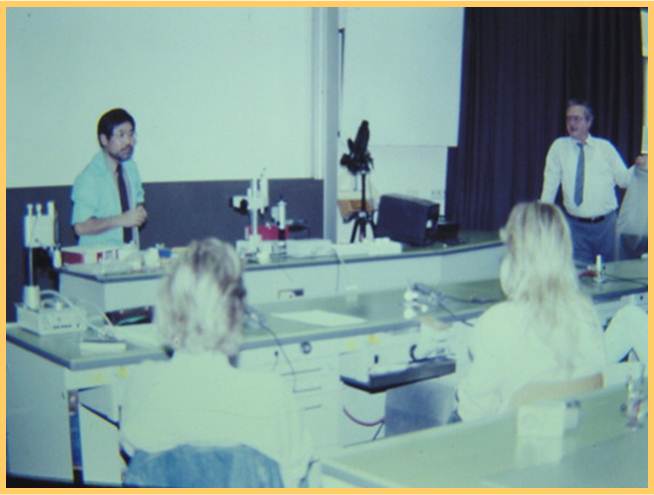
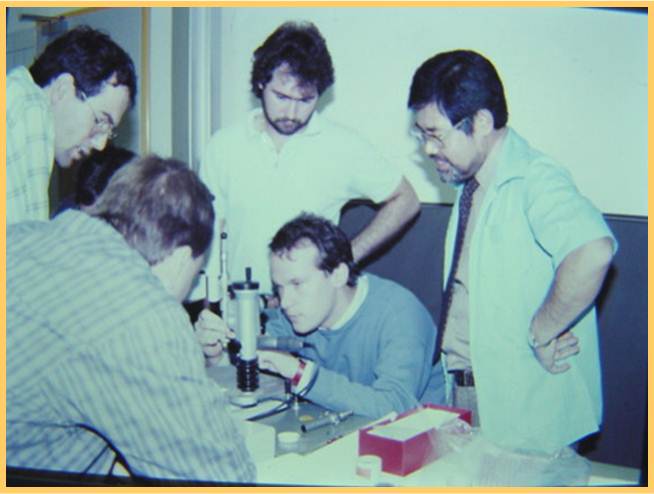
In Germany, Konus Krone is just one of many types of telescope systems. There was nothing particularly special about this treatment method.
I learned that by using not only Konus Krone, but also Riegel telescope, Resilience telescope, Anchor Band telescope, and a few other telescope techniques, I could treat almost any case. Riegel telescope especially proved to be applicable in many cases using both rotating Riegel and revolving Riegel. I was able to actually experience clinical care in Germany where these telescope systems were used. That experience is what I base my own clinical care on even today.
3. How Konus Krone is handled in Japan
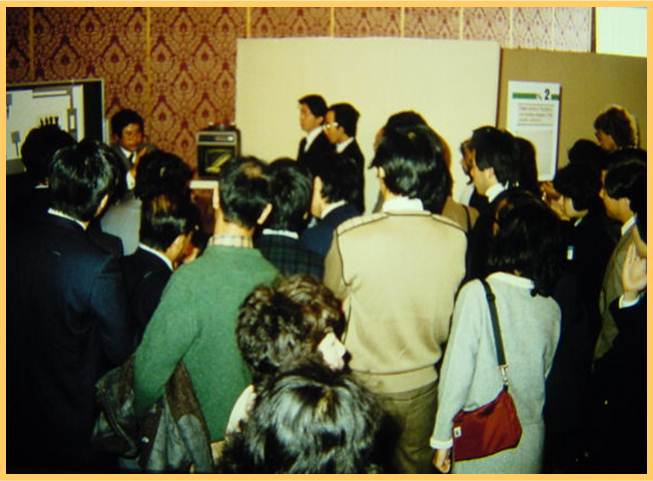
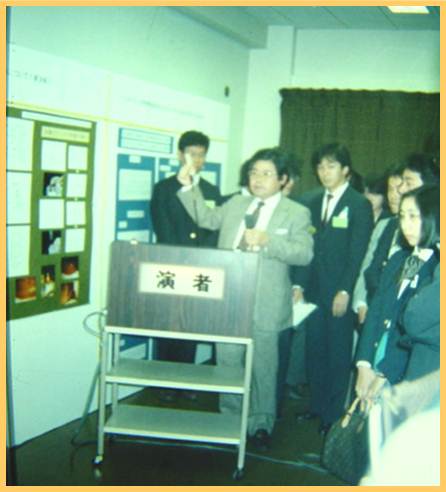
When I returned to Japan in 1980 this technique was beginning to spread among clinicians under the name Conus Crown. But the actual clinical procedures and manufacturing method was very different from what I had seen in Germany.
The metal being used in Japan was a gold and silver alloy called palladium. It kind of looked like the gold used in Germany, but it was not the same. At any rate it was quite different from the procedure that I learned in Germany.
The purity of the gold and silver palladium alloy degrades after long use. After seeing this I decided that I needed to spread the correct 'Konus Krone' technique so I published 'Konus Krone' and 'Riegel telescope' in the Shofu Color Atlas.
One big difference is that Japanese instructors were teaching that dentists should just remove the nerves from the teeth because of the large amount of filing necessary. Removal of nerves from the teeth became a big problem as the teeth would crack and the reputation of Konus Krone suffered greatly. In Germany, one of the rules of Konus Krone is that only teeth with nerves can be used as support foundations, but in Japan this was the complete opposite.
Moreover, it is necessary to understand the fundamentals of denture design in order to protect teeth, but in Japan these fundamentals were widely unknown. This was especially true for the 'torsion bar' and 'sparte', bed designs that prevent the breaking of teeth. These techniques were completely unknown in Japan and in fact no measures were put into place to prevent teeth from breaking.
With these fatal flaws, the number of dentists who treated with Konus Krone grew fewer and fewer.
4. How Konus Krone should be used from now on
On the other hand, there are many cases of the Konus Krone treatment method being used correctly and patients happily using their dentures even 30 years after first receiving treatment.
When I was studying under the auspices of Professor E. Koerber as a visiting professor at Tubingen University in Germany, I was fortunate enough to have experienced the telescope system being used to treat many cases and receive information first-hand.
It is our hope to continue to expand our offering of clinical services. Konus Krone is not the only type of telescope system that we use in our clinic. We also use Riegel telescope, Resilience telescope, and many other treatment methods chosen to suit each individual case. Moreover, in recent years we have been able to combine telescope system treatment with implants with favorable results. So we are very excited about future developments.
---------------------------------------------------------------------------------
An article that Dr. Inaba published at the time called 'Orthodox Konus Krone' has been made into a booklet!
It speaks in detail about the correct method of treatment. It contains details about the correct treatment method including the use of an occlusial core, the Konus milling machine, the correct impression method, set method, and many other such procedures.
The fundamental design of Konus Krone can be suited to all partial dentures.
This booklet is unattainable anywhere else. Please pick up a copy for your own reference (intended for dentists).
2015年2月10日
I have partial dentures. They make it difficult for me to talk and pronounce words correctly. It is quite troubling.
Q. My upper dentures are giving me trouble. I am missing 1 molar on the right side and 2 molars on the left side. I had partial dentures made about half a year ago, but the other day they began to feel really awkward. I can't talk or pronounce words correctly and it is really grieving me.
The bar in the upper jaw pops up and I have to support it with my tongue. I am forced to think about my dentures all day long.
When I bite into food, there is no taste and only pain. The dentist who made them for me told me I would get used to them but I have been practicing with them for 6 months now. What should I do?
A. Everyone experiences an awkward feeling when first getting dentures. But most people get used to them after some time.
But this actually depends on how well they fit with your own teeth.
Dentures that do not move around in the mouth are made on the premise that they should adhere to the point where air and water do not cause them to move. .
Some reasons why dentures fall out in the case of full dentures is that air gets under the inner edges, or the dentures lose muscle support because they are too small. In the case of partial dentures, with each bite, they wiggle around the clasps that support them. This eventually causes the denture to lose their tight fit.
Dentures that move around in the mouth like this require constant support from the tongue and in turn make it difficult for patients to get used to them.
Our clinic uses the German-developed telescope system. These dentures are made to prevent the teeth from wiggling as much as possible. If the dentures are not wiggling your teeth, this means that they fit well and will not move or fall out.
Even in the case of full dentures, we can make ones that do not allow air to get in. We do this by using the maxillomandibular simultaneous impression method modeled after Strack dentures. We use this method to make a complete copy of the inside of your mouth.
As for the thin pink bed of the dentures, by using a polymerization system called the Ivocup system, we are able to make a thin yet strong bed, which pleases our patients greatly.
Of course we also do a pronunciation check and make adjustments if there are any problems.
▼Regions that effect pronunciation
We conduct a pronunciation check by applying Vaseline to the palate of the dentures, sprinkling on some powder, and having the patient pronounce some words. Through this method we can locate regions of the palate that may be effecting pronunciation and then file them down. We can also make adjustments by adding to the shape of the palate.

